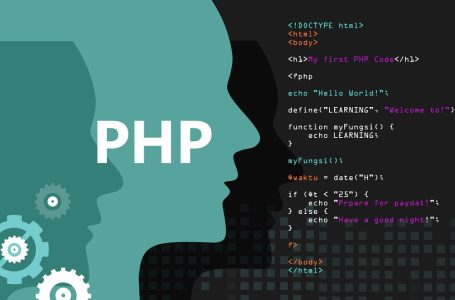Step into a world where the lines between reality and imagination blur, where websites transcend traditional boundaries to offer immersive experiences like never before. Virtual Reality (VR) is revolutionizing the way we interact with digital content, opening up new possibilities for web development that go beyond our wildest dreams. In this blog post, we delve into the exciting realm of PHP and VR, exploring how these technologies come together to create captivating online experiences that captivate and inspire users. Join us on this journey as we uncover the magic of blending PHP with virtual reality to craft websites that transport visitors to alternate realities.
The Role of PHP in Creating Virtual Reality Websites
Virtual Reality (VR) has revolutionized the way we experience digital content, offering immersive and interactive experiences like never before. In the realm of web development, PHP plays a crucial role in bringing VR websites to life.
PHP’s versatility and robust features make it an ideal choice for handling complex backend operations required for VR applications. From processing user inputs to managing databases, PHP empowers developers to create seamless and dynamic virtual environments.
By leveraging PHP frameworks such as Laravel or Symfony, developers can streamline the development process and enhance the performance of VR websites. These frameworks provide ready-to-use components that expedite coding tasks and ensure scalability.
PHP’s compatibility with various platforms makes it accessible for a wide range of users across different devices. This flexibility allows developers to reach a broader audience with their VR projects while maintaining consistency in functionality.
PHP serves as a reliable foundation for building immersive VR websites that captivate users with engaging visuals and interactive elements.
Advantages and Challenges of Using PHP for VR Development
When it comes to using PHP for VR development, there are both advantages and challenges to consider. One of the main advantages is that PHP is a widely-used server-side scripting language, making it readily available for developers to create dynamic VR websites and applications. Its compatibility with various databases also allows for seamless integration of VR content.
On the other hand, one challenge of using PHP for VR development is its performance limitations compared to more specialized languages like C++ or JavaScript. As VR experiences require high processing power and real-time rendering, optimizing PHP code becomes crucial to ensure smooth user interactions and immersive visuals.
Despite these challenges, many developers have successfully overcome them by employing efficient coding practices and leveraging PHP frameworks tailored for VR development. By harnessing the flexibility and versatility of PHP, creators can unlock endless possibilities in crafting captivating virtual reality experiences on the web.
Real-Life Examples of VR Websites Built with PHP
Have you ever wondered what VR websites built with PHP actually look like in action? Let’s take a sneak peek into some real-life examples that showcase the immersive experiences created by combining PHP and virtual reality technology.
One notable example is a virtual museum website where visitors can explore exhibits and artifacts from different eras, all from the comfort of their own homes. The interactive nature of the site allows users to move around freely and interact with objects just as they would in a physical museum.
Another exciting application is an e-commerce platform that offers customers a 360-degree view of products before making a purchase. This innovative approach enhances the online shopping experience by providing a more realistic representation of items, leading to increased customer satisfaction and reduced returns.
Educational institutions have started incorporating VR technology into their websites using PHP to offer students immersive learning experiences. Imagine studying complex scientific concepts through interactive simulations or exploring historical events through virtual tours.
These examples demonstrate the endless possibilities for creating engaging and dynamic web experiences using PHP and VR technology. Who knows what other groundbreaking applications developers will come up with next!
The Exciting Possibilities for Immersive Web Experiences with PHP and VR
The exciting possibilities for immersive web experiences with PHP and VR are endless. By harnessing the power of PHP in virtual reality development, web developers can create captivating and interactive websites that transport users to new worlds. With its flexibility, scalability, and robust features, PHP offers a solid foundation for building VR websites that deliver engaging content and seamless user experiences.
As technology continues to advance, the fusion of PHP and VR opens up a whole new realm of possibilities for creating innovative online experiences. From e-commerce platforms to educational portals to entertainment hubs, integrating virtual reality into web development with PHP can revolutionize how we interact with digital content.
In this rapidly evolving digital landscape, embracing the potential of PHP and VR paves the way for immersive storytelling, enhanced visualizations, and unparalleled user engagement. As more businesses and industries recognize the value of immersive technologies in enhancing their online presence, incorporating VR into web development with PHP will become increasingly essential for staying ahead in the competitive market.
As we look towards the future of web development, it’s clear that PHP combined with virtual reality holds tremendous promise for shaping the next generation of interactive websites. The synergy between these two technologies is poised to redefine how we experience the digital world – opening up a world of possibilities limited only by our imagination. Get ready to embark on an exciting journey where boundaries blur between reality and cyberspace as we step into a new era of immersive web experiences powered by PHP and virtual reality!

